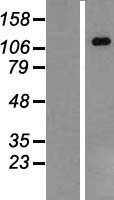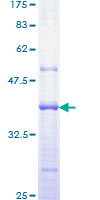order histories, retained contact details for faster checkout, review submissions, and special promotions.
Forgot password?
order histories, retained contact details for faster checkout, review submissions, and special promotions.
Locations
Orders Processing,
Shipping & Receiving,
Warehouse
2 Shaker Rd Suites
B001/B101
Shirley, MA 01464
Production Lab
Floor 6, Suite 620
20700 44th Avenue W
Lynnwood, WA 98036
Telephone Numbers
Tel: +1 (206) 374-1102
Fax: +1 (206) 577-4565
Contact Us
Additional Contact Details
order histories, retained contact details for faster checkout, review submissions, and special promotions.
Forgot password?
order histories, retained contact details for faster checkout, review submissions, and special promotions.
IPAF / NLRC4
NLR family, CARD domain containing 4
Apoptosis is related to many diseases and induced by a family of cell death receptors and their ligands. Cell death signals are transduced by death domain containing adaptor molecules and proteases including several members of the caspase family. Another family of proteins that functions as a critical regulator of apoptosis and NF-kB signaling pathways is the CED-4/Apaf-1 (apoptosis protein activating factor-1) protein family. Ipaf (ICE protease activating factor) is a CED-4/Apaf-1 family member that activates caspase-1/ICE and can induce apoptosis in human cells in a caspase-1 dependent manner. Ipaf and caspase-1 are thought to interact with each other through the association of the Ipaf amino-terminal CARD (caspase recruitment domain) and amino-terminal CARD of caspase-1.
| Gene Name: | NLR family, CARD domain containing 4 |
| Family/Subfamily: | Apoptosis |
| Synonyms: | NLRC4, CARD12, CLANA, CLANB, CLANC, CLAND, CLAN, CLR2.1, Clan protein, CLAN1, Ice protease-activating factor, NOD-like receptor C4, ICE-protease activating factor, IPAF |
| Target Sequences: | NM_021209 NP_067032.3 Q9NPP4 |
Publications (3)



If you do not find the reagent or information you require, please contact Customer.Support@LSBio.com to inquire about additional products in development.









